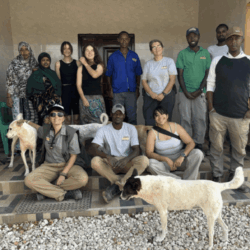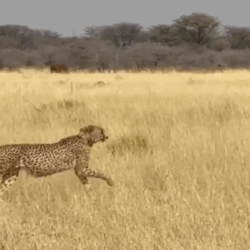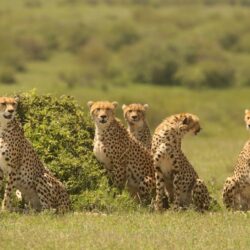What is the Key to Cheetah Cubs’ Survival?
-

- by Jameson Bowman April 2, 2019
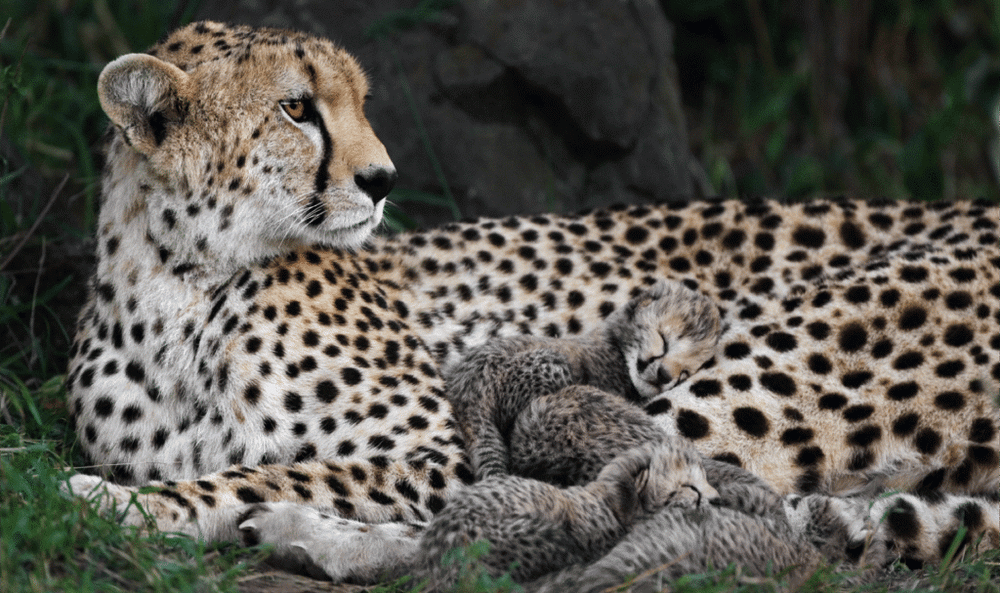
Simply put, the mother is the primary key to a cheetah cub’s survival.
Female cheetahs are solitary creatures where males and females only come together to mate. When a female and male mate, they spend 2-3 days copulating multiple times. Once impregnated, the female returns to her solitary life; her pregnancy last for approximately 100 days. The male has no role in raising offspring.
Infanticide is common among other big cat species like lions, but this behaviour does not occur with cheetahs. When groups of adult males (called coalitions) encounter a mother and her cubs, the males can be aggressive but never actually harm the cubs. Given the wide range of cheetah territories and the frequency with which they can breed it is never certain for the males if the cubs are their offspring or not. It is also possible for female cheetahs to have litters with multiple paternity, and for mothers to adopt orphaned cubs. Once the males realise the female has cubs and is not interested in breeding, they move on.
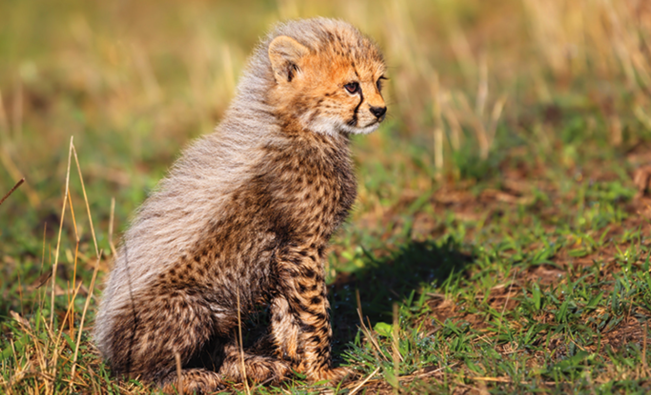
Cheetahs do not have a breeding season and give birth throughout the year. However, there are regional differences, for example, within Namibia 70% of cubs are born between March and July corresponding to the rainy season during which grasslands are fertile and provide better coverage and abundant prey.
Litters have between 2-6 cubs that are born fully furred with an indistinct spot pattern, which makes them appear gray. A cub weighs less than a pound and is born blind and helpless. Mothers spend much of their time cuddling and purring to comfort her cubs. Cubs’ eyes open between 10 days and 2 weeks. Mothers keep their cubs hidden in their den for 6 to 8 weeks to keep them protected from predators such as lions, hyenas and leopards. Mother move cubs from den to den many times.
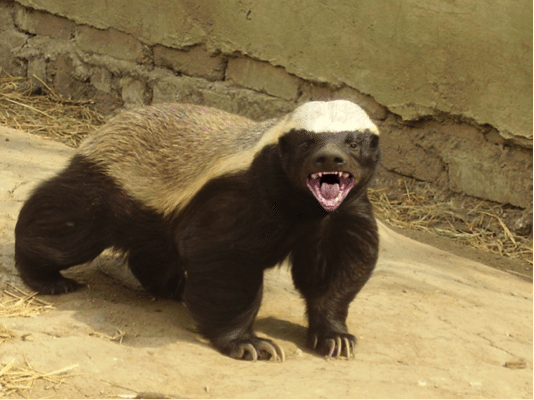
The main factor determining cubs’ survival for the first 2 months is their ability to stay hidden from predators. During these early months, mothers are careful to not give away the cubs’ positions. If cubs are discovered, mothers fight off predators, but as cheetahs are built for speed and not fighting the outcome is rarely positive. Of the 12 litters observed in the Serengeti National Park, 7 entire litters were killed by predators and 1 starved because the mother was killed by predators.
If cubs survive their crucial first 2 months, they emerge from the den having grown a mantle of raised hair along their back. This mantle provides both warmth and safety, disguising them as an aggressive honey badger to discourage predators.
During the 2 – 8 month period the cubs are juveniles and are still very much at risk of predation. They continue to move dens frequently and communicate through soft bird like chirps and yelps. At this point, the cubs watch their mother hunt and begin to develop their impressive eyesight. As vital as this process is, it can be detrimental to the hunt as cubs often give away their position and notify the prey. Although rare, mother cheetahs have been known to scavenge a carcass when too many hunts have failed. Mothers also tend to leave a kill faster with cubs to decrease encountering scavenging predators.
Juvenile cubs are extremely energetic and begin developing their survival skills through play. They chase, stalk and wrestle each other, climb trees, and ‘hunt’ smaller animals. At around 5 months old, their mother introduces meat and stops nursing them by covering her nipples with hind-legs, rolling onto her belly or sitting up. She also begins releasing her captured prey for the cubs to practice chasing and re-catching, but she still has to perform the kill. The mother and cubs will now start to hunt together but not until 12 months old can cubs initiate their own hunts and kills, even then though the skills take years to fully develop.
From 14 months on, the cubs are no longer adolescents and their mother will leave them on their own. The cubs stay together for a few months until the female(s) claim territories separate but adjacent to each other’s and their mother’s’. The males stick together for the rest of their lives, or seek another male coalition, and go far from their mother and sisters’ ranges. Although now independent, both males and females are not fully-grown until 2 years old.
To see an adult cheetah in the wild is to see a survivor!
One who has overcome insurmountable odds and continues to survive as both predator and prey. Cheetahs have always suffered from low cub survival rates and now have an additional pressures coming from illegal wildlife trade, further reducing their populations.
The CCF operates on the front lines combating illegal wildlife trade and makes a difference everyday. Click here for recent press release to learn more about these efforts. Learn how you can directly help ensure cheetah cubs remain with their mothers and remain wild.
Bibliography
Adamson, Joy. Pippa’s Challenge. Wm. Collins and TheHarvillPress. London UK, 1972.
Crosier, Marker et al. Ejaculate traits in the Namibia Cheetah (Acinonyx jubatus): influence of age, seasons and captivity. Reproduction, Fertility and Development, 2007, 19, 370-382.
Marker, Laurie and Amy J. Dickman. Morphology, Physical Condition, and Growth of the Cheetah (ACINONYX JUBATUS JUBATUS). Journal of Mammalogy, 84(3):840-850, 2003.
Marker, Dr. Laure and Suzi Eszterhas. Cheetahs: A Celebration of Speed and Elegance, Cheetah Conservation Fund: PO Box 2496 Alexandria, VA 22301, 2018.
Meachen, Julie et al. “Cheetah Specialization Physiology and Morphology.” Cheetahs Biology and Conservation. Ed. Marker, Laurie et al. Cambridge USE: Elsevier Inc. 2018, 93 – 102. Print.
Wachter, Bettina et al. “Behaviour and Communication of Free-Ranging Cheetahs.” Cheetahs Biology and Conservation. Ed. Marker, Laurie et al. Cambridge USE: Elsevier Inc. 2018, 121 – 133. Print.
Related Reading
-
November 23, 2025
Canadian Veterinarian Reunites With Rescued Cheetahs – Somaliland
